|
More Hamstring Injury Facts: Oral Medications can mask the pain but do not aid in the healing of a Hamstring muscle injury. Anti-inflammatories and Pain killers can cause Hamstring muscle related injuries to worsen. One out of three athletes who sustain an initial hamstring injury will reinjure their hamstring within a year of returning to play. It is theorized that weakness in the hamstring muscle due to incomplete or improper (scar tissue) healing will often cause a hamstring re-injury. A Grade 1 Hamstring Injury is a mild strain with a few torn muscle fibers in the hamstring. A Grade 2 Hamstring Injury is a moderate strain and the patient shows a definite loss in strength. A Grade 3 Hamstring Injury is a complete tear of the hamstring muscles. 10% to 23% of all acute soccer injuries are typically hamstring tears and hamstring strains (also known as strain injuries of the posterior thigh). A complete tear of the Hamstring will require reattachment surgery. There is no avoidance of this.  Possible Reasons for High Rates of Hamstring Injury: Timing and Coordination problems during a running sprint - specifically during the time the back leg is off the ground and pulled forward (to place on ground in front of you). Running stride is too long (overstride), or the sway in the run is significant (causing more stress on the hamstring). An Improperly healed hamstring injury will predispose you to another hamstring injury. Lack of stiffness in the hamstring muscle will increase your chance of a strain when your feet are contacting the ground in a run. (inability to absorb enough shock) Improper warm-up before exercise. A slippery playing surface increase your odds of a hamstring strain due to slipping. Certain Lower Back Issues may potentially cause weakened muscles; weak hamstring muscles are more prone to strain than stronger hamstring muscles. |
Pulled Hamstring Home TreatmentsTreating your hamstring strain correctly is essential to getting rid of your pain and restoring function to your upper thigh. Proper treatment will get you back to regular activities sooner, stop your pain, and reduce the risk of future re-injury. 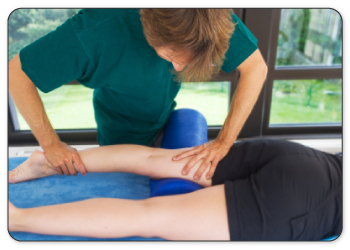 To restore strength and range of motion in your hamstrings, treatment should focus on preventing scar tissue formation and muscle atrophy (shrinkage and weakening of the muscle). This requires rest and the appropriate treatments at the right time. Almost all types of hamstring pulls and tears (except a complete hamstring rupture) can be properly treated with trusted treatments that are available for use at home. Complete ruptures usually require surgery. However, using these home treatments after surgery can help speed recovery, improve function, and increase range of motion in your hamstrings. Patient education and self-management are very important in recovering from a hamstring injury or pulled hamstring. Evaluate how you use your thigh muscles in daily activities to determine if you can decrease stress on your tissues. This may involve changing your technique and/or using correct or supportive equipment (proper shoes, mobility aids) to help you perform them more effectively and safely. Taking more frequent breaks during your work or activities can also alleviate stress. Speak with a health professional in your specific activity or work setting to get the proper information. Gradually Increase ActivityOnce the pain from your pulled hamstring starts to decrease, a PT or athletic trainer can set up an individualized strengthening, endurance and stretching exercise program for you to strengthen and improve flexibility to your hamstring and leg muscles. A gradual build-up to your regular activities is essential during your rehabilitation to restore strength, fitness and co-ordination. Generally you will start with passive range of motion and isometric exercises (strength building exercises that involve contractions against resistance without moving your joints). Once you complete these with minimal pain, you will be able to participate in more dynamic movements and strengthening activities (like hamstring curls, squats, lunges, deadlifts, elastic tube exercises, water exercises, stationary cycling, walking, elliptical training and/or weight training). When tenderness is gone and you are able to fully tense the hamstring without any pain, you can gradually return to jogging or higher impact activities for short periods of time. It is important to stop if you feel any twinges of pain.  Aggressive stretching (yoga) too soon may stress your hamstring muscles and cause more aggravation. However, gentle stretching will be essential to regain normal tissue flexibility and prevent against scar tissue development (straight leg seated or standing stretching). Daily stretching (a few times a day) in which you hold stretches for 15 30 seconds each is recommended once you are ready. Use pain as your guide whether you are ready to move on to the next level or not. Avoidance of aggravating activities (any activity that involves repeated bouncing movements or "stops and starts") and activity modification (pursuing less strenuous, weight bearing routines) are recommended. It is suggested that you start at 50% of what you would normally do, and increase gradually as you see improvement in your condition. Warm up, with light jogging or a Circulatory Boost treatment and cool down, your leg after your activity. Individuals will often exercise or lift weights on their own to try and build up their strength; however in doing so, they can do more damage. A medical or fitness professional will help to ensure your rehabilitation process is effective. For best, long-term results use conservative treatment methods (such as the TShellz Wrap® and the Cold Compress or Ice Pack) in conjunction with an exercise program. Use Supportive Devices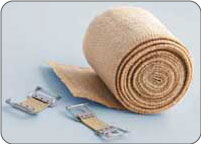 To increase your comfort and prevent further damage you may want to use an upper thigh support (neoprene sleeve or brace), strapping, tape, or compression short which will help support the area, eliminate pulled muscles, and reduce stress on the injured tissue. Some of these are also designed for heat retention to prevent further strain. They can be used until your injury is gone or during active sports for additional stability. However they should not be worn at all times, as they can limit muscle development, cut off circulation and impede healing of your muscle tissue. Effective Conservative Treatments for At HomeStep 1 - Reduce Pain & Swelling with a Cold Compress or Ice PackThe 1st step for conservative treatment of your hamstring injury is to reduce swelling to "open up" the area for more blood flow. Anyone in the health-care business knows that your blood supplies the oxygen and much needed nutrients required for your hamstring to heal naturally. This is why doctors and surgeons recommend cold compression within the first 72 hours of an injury and following meniscus surgery. Cold compression is recommended to reduce pain, swelling and tissue damage. Many doctors, surgeons and PTs consider cold compression to be the gold standard for treatment of inflammation and pain. Cold compression is known and trusted by most medical professionals. This is why for years doctors, trainers and other medical professionals have recommended RICE (Rest, Ice, Compression, Elevation) to treat the pain and swelling of fresh injuries, chronic pain, after any re-injury, and especially after surgery. This is important because once blood vessels are blocked or damaged, they can no longer carry oxygenated blood through the tissue and and so tissue begins to break down. Without cold compression, tissue break-down and damage continues as the tissue doesn't get the oxygen it needs to survive. By limiting the amount of damage done to your hamstring, you also limit the amount of healing that needs to occur. This is a very important step to heal hamstring injuries faster and with less pain! This is why you need to treat your hamstring injury, when you notice pain / swelling / inflammation, or directly after a re-injury. Applying a Cold Compress or Ice Pack right away will stop the damage immediately and unblock your blood vessels to let your body's natural blood flow in to start healing the tissue. Use a Cold Compress or Ice Pack:
Step 2 - Improve Circulation & Prevent Re-Injury with Circulation BoostThere are a lot of people that think their hamstring injury is gone after their swelling and inflammation are gone and their leg feels better. They also make the mistake of returning to regular activities too soon without proper time for healing. The truth is that healing takes time and after the swelling is gone your hamstring injury isn't even close to being fully healed. After the inflammation in and around your hamstring has been reduced, providing extra blood flow and strengthening the tissue in your hamstring is recommended. Believe it or not, the best time for you to focus on avoiding re-injury and strengthening your weakened hamstring is when the swelling's gone and your injury's started to heal. It's vital that you don't go back to activities too soon because you might bring on a major set-back in your recovery...
If this sounds like you - You're not alone...Most people we deal with tell us these scenarios have happened to them many times in the past. The real challenge is how to promote blood flow to your injured bursa without causing further injury. This goal is even more complicated by the fact that your hamstring takes on a lot of weight for your leg to support your knee. Hamstring injuries, tendonitis, torn ligaments and overall leg, knee or hip pain can often occur at the same time - weakening not only your damaged hamstring, but also all of the soft tissue surrounding your hamstring. What can you do to actually start healing your hamstring injury?The answer is simple. Your body can heal itself and it's the blood in your body that makes it all happen. Your blood is how everything that's good inside of you is transported directly to your injured hamstring. Your blood carries oxygen, nutrients and water right to the source of your injury and pain. Bringing proper blood flow to your injured hamstring is essential to healing. Promoting blood flow around injured tissue to help the body heal itself is a concept that's been used for centuries. Oxygen and nutrients, carried in your own blood, are critical for the body to heal itself. Without proper blood flow, recovering from your hamstring injury will be delayed... Sometimes for a very long period of time. Even though the concept is simple, improving blood flow to your hamstring can be difficult. Traditional methods require you to move your damaged hamstring in order to promote blood flow. This same motion that promotes blood flow can also make your pain and hamstring injury much worse (especially if you need to immobilize your leg at any point during your recovery process). Relying on movement alone to increase blood flow puts you in danger of re-injuring your hamstring. So what do you do when you need to increase blood flow, but you can't move your hamstring without re-injuring your tissue? This is where the TShellz Wrap® and Circulation Boost (Circulatory Boost) come in! Using Circulation Boost (Circulatory Boost), will help with your recovery and heal your hamstring more completely. Circulatory Boost increases the amount of blood that flows naturally to your soft tissue to nourish your hamstring muscle, improving elasticity and speeding the healing process. This increased Circulation Boost to your damaged hamstring is greatly needed to complete your healing and avoid re-injury once and for all. The only way to get Circulatory Boost is through use of a TShellz Wrap®. 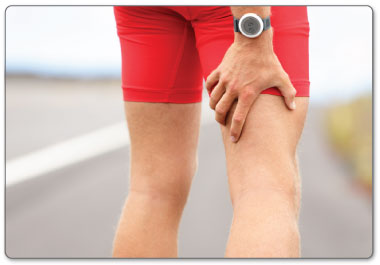
Regular treatments with a Leg TShellz Wrap® can reduce pain and stiffness from scar tissue and increase overall flexibility in your leg. Increased blood flow will whisk away damaged tissue, toxins, and any bacteria in your injured hamstring to promote more effective healing. Getting rid of toxins will allow all of the positive healing processes to start in your injury. Increasing blood flow will also increase the amount of oxygen that's being sent to your injured tissue AND boost your tissue's ability to absorb oxygen. (reference: 1) Regular treatment with our TShellz Wraps® will ensure:
Increased Blood Flow = More Oxygen, More Nutrients and Less Toxins = Faster Healing The Leg-Arm TShellz Wrap®, is an FDA Registered Medical Device and is suitable for use at home. It is completely safe for people and patients to use for themselves. | Hamstring Injury Facts: Hamstring Muscles cross both your hip and knee, and help extend (straighten) the hip or bend the knee. A Hamstring injury is an injury to one of the three different hamstring muscles in the back of the thigh. The three Hamstring muscles name are: Biceps Femoris, Semitendinousus, Semimembranosus muscles. Continually using your Hamstring muscles while injured will lead to a worse injury; and yes, it is difficult to avoid using the Hamstring. Most Hamstring injuries happen while playing sports, such as soccer or football. Once you have suffered one Hamstring injury, there is a very good chance you will suffer another Hamstring injury.  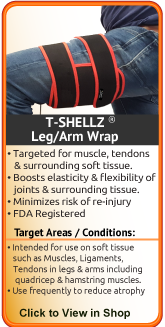  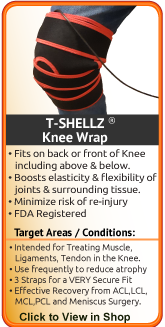  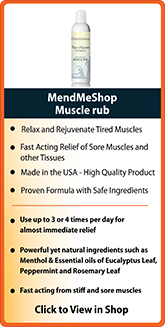   |


